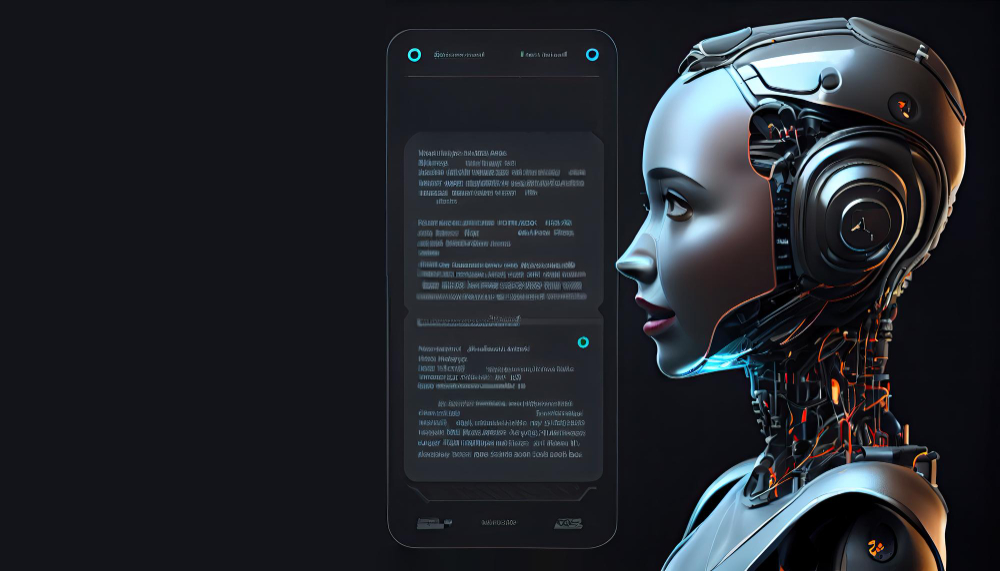In today’s fast-paced business environment, organizations are constantly seeking innovative ways to streamline their operations and improve efficiency. One such solution that has captured the attention of many professionals is the harnessing of AI chatbots. These intelligent virtual assistants are revolutionizing the way businesses interact with their customers, employees, and partners. By leveraging advanced artificial intelligence capabilities, chatbots are able to automate mundane tasks, provide instant support, and enhance productivity across various departments. In this article, we will explore the benefits of harnessing AI chatbots for operational efficiency and how they can transform your organization’s performance.
Understanding AI Chatbots
What are AI chatbots?
AI chatbots are computer programs designed to simulate conversations with human users. They use artificial intelligence and natural language processing technology to understand and respond to user queries. These chatbots are often integrated into messaging platforms or websites to assist with customer support, lead generation, task automation, and data analysis.
How do AI chatbots work?
AI chatbots work by analyzing the text input from users and using machine learning algorithms to understand the intent behind the messages. They use pre-defined rules or machine learning models to generate appropriate responses based on the context of the conversation. Some chatbots also leverage natural language processing (NLP) techniques to improve their understanding of user input and provide more accurate responses over time.
Benefits of using AI chatbots
Using AI chatbots offers several benefits for businesses and organizations. Firstly, they provide round-the-clock customer support, allowing users to get help and information at any time. This enhances customer satisfaction and reduces the need for human support agents to handle repetitive and basic queries. Additionally, AI chatbots can handle multiple conversations simultaneously, reducing response times and increasing overall efficiency. They also collect valuable data from user interactions, which can be used for data analysis and reporting to gain insights into customer behavior and preferences.
Applications of AI Chatbots in Operations
Customer support
AI chatbots are widely used in customer support operations to provide efficient and timely assistance to customers. They can answer frequently asked questions, troubleshoot common issues, and provide product information. By handling basic customer queries, chatbots free up human agents to focus on more complex and high-value tasks. This improves customer satisfaction and helps businesses provide round-the-clock support.
Lead generation and sales
AI chatbots can also be employed to generate leads and assist with the sales process. They can engage with website visitors, qualify leads, and provide personalized recommendations based on user preferences. By automating lead generation, chatbots help businesses streamline their sales funnel and capture leads more effectively. They can also collect valuable customer data during conversations, which can be used for targeted marketing campaigns and improving sales strategies.
Task automation
One of the key benefits of AI chatbots is their ability to automate routine tasks and processes. Chatbots can handle administrative tasks such as appointment scheduling, order tracking, and invoice generation. By automating these manual tasks, businesses can save time and reduce human errors. This increases operational efficiency and allows employees to focus on more strategic and value-added activities.
Data analysis and reporting
AI chatbots can collect and analyze large amounts of data from user interactions, providing businesses with valuable insights. By analyzing user preferences, behavior patterns, and frequently asked questions, chatbots can help identify areas for improvement in products or services. They can also generate reports and dashboards to provide real-time insights into customer satisfaction, response times, and other key metrics. This data-driven approach helps businesses make informed decisions and improve operational efficiency.

This image is property of Amazon.com.
Implementing AI Chatbots in Operations
Identifying operational pain points
Before implementing AI chatbots, it is important to identify the specific pain points and challenges in the existing operations. This could include high volumes of repetitive queries, long response times, or inefficient task management. By understanding these pain points, businesses can determine how AI chatbots can address these challenges and improve overall operational efficiency.
Selecting the right AI chatbot platform
There are various AI chatbot platforms available in the market, each with its own strengths and capabilities. It is crucial to select a platform that aligns with the specific operational requirements and goals of the business. Factors to consider when selecting a chatbot platform include ease of integration, scalability, natural language processing capabilities, and customizable response options.
Customizing chatbot responses
To ensure effective user interactions, it is important to customize chatbot responses to match the business’s brand voice and provide relevant information. This can be done by creating a knowledge base of frequently asked questions, product information, and support resources. Training the chatbot with this data enables it to provide accurate and helpful responses to user queries. Regularly updating the knowledge base also ensures that the chatbot remains up-to-date with the latest information.
Integrating chatbots with existing systems
To maximize the benefits of AI chatbots, they need to be seamlessly integrated with existing systems and platforms. This includes integrating chatbots with customer relationship management (CRM) systems, ticketing systems, and knowledge bases. Integrating chatbots with these systems allows for seamless data flow and ensures that the chatbot has access to relevant information to provide personalized and accurate responses.
Training and Maintaining AI Chatbots
Training the chatbot with relevant data
Training an AI chatbot involves providing it with relevant data so that it can learn and improve its performance over time. This may involve feeding the chatbot with existing conversations or transcripts to help it understand various user queries. It is also important to provide ongoing feedback to the chatbot based on user interactions to continuously improve its responses and accuracy.
Monitoring and improving chatbot performance
Regular monitoring of chatbot performance is essential to ensure its effectiveness in operations. This involves tracking metrics such as response times, accuracy of responses, and user satisfaction ratings. By analyzing these metrics, businesses can identify areas for improvement and make necessary adjustments to enhance the chatbot’s performance. This may include fine-tuning its algorithms, updating the knowledge base, or incorporating new features based on user feedback.
Updating the chatbot with new information
To keep the chatbot relevant and up-to-date, it is important to regularly update it with new information. This includes updating the knowledge base with the latest product information, FAQs, and other resources. It is also crucial to keep the chatbot informed about any changes in business processes or policies so that it can provide accurate and consistent responses. Ongoing maintenance ensures that the chatbot continues to meet user expectations and remains an effective tool for operational efficiency.

This image is property of Amazon.com.
Ensuring Effective User Interactions
Designing a user-friendly chatbot interface
The design of the chatbot interface plays a crucial role in ensuring a positive user experience. The interface should be intuitive and easy to navigate, with clear instructions for users to follow. It should also provide options for users to switch to a human agent if needed. Design elements such as colors, fonts, and visuals should align with the business’s branding and create a sense of trust and professionalism.
Crafting conversational and helpful responses
To provide a seamless and natural user experience, it is important for chatbots to generate conversational and helpful responses. Responses should be personalized and tailored to the user’s query, rather than generic and robotic. This can be achieved by using natural language processing techniques to understand the context of the conversation and providing relevant information or suggestions. Chatbot responses should also be concise, clear, and easy to understand.
Handling complex queries and escalations
While AI chatbots are effective at handling routine queries, there will be instances where users have complex or specialized questions. In such cases, the chatbot should be able to gracefully hand over the conversation to a human agent. This can be done by implementing a seamless handover process, where the chatbot transfers the conversation history and relevant context to the human agent, ensuring a smooth transition for the user.
Providing seamless handover to human agents
In scenarios where the chatbot is unable to provide an appropriate response or the user specifically requests human assistance, it is important to have a seamless handover process. This involves transferring the conversation to a human agent who can further assist the user. The handover process should be efficient and transparent, ensuring that the user does not experience any delays or frustration during the transition. Proper training and guidelines should be provided to human agents to ensure consistent and high-quality support.
Measuring the Success of AI Chatbots
Defining key performance indicators (KPIs)
To measure the success of AI chatbots, it is important to define key performance indicators (KPIs) that align with the business goals. These could include metrics such as response times, customer satisfaction ratings, conversion rates, cost savings, and sales revenue generated through chatbot interactions. Setting clear and measurable KPIs allows businesses to track the impact of chatbots on operational efficiency and make data-driven decisions for future improvements.
Tracking customer satisfaction
Customer satisfaction is a crucial metric to measure the effectiveness of AI chatbots. This can be done through post-interaction surveys, user feedback, or sentiment analysis of chatbot conversations. Tracking customer satisfaction helps businesses identify areas of improvement and address any issues or gaps in the chatbot’s performance. Regularly analyzing customer satisfaction data also helps businesses understand user preferences and expectations, allowing for targeted improvements in the chatbot’s responses and overall user experience.
Analyzing chatbot response efficiency
Measuring the efficiency of chatbot responses is important to ensure timely and accurate support. Response times can be tracked to identify bottlenecks or areas where the chatbot may need optimization. Additionally, analyzing the accuracy of chatbot responses helps identify any gaps in the chatbot’s knowledge or training. By continuously monitoring and improving response efficiency, businesses can provide faster and more consistent support to users, enhancing overall operational efficiency.
Calculating cost savings
One of the key benefits of AI chatbots is their potential to generate cost savings for businesses. By automating routine tasks and handling basic customer queries, chatbots reduce the need for human support agents, leading to lower operational costs. Calculating cost savings can be done by comparing the expenses associated with human agent support versus the investment in chatbot implementation and maintenance. This financial analysis helps businesses evaluate the cost-effectiveness of chatbots and assess their impact on operational efficiency.

This image is property of Amazon.com.
Addressing Potential Challenges
Dealing with language and cultural barriers
Language and cultural barriers can pose challenges for AI chatbots, especially when interacting with users from diverse backgrounds. Chatbots need to be trained to understand and respond appropriately to different languages, accents, and cultural nuances. This can be achieved through robust language models, continuous training, and incorporating multilingual capabilities in the chatbot platform. Additionally, providing options for users to switch to their preferred language or access language-specific support resources can help overcome language barriers.
Handling sensitive and complex customer data
AI chatbots often handle sensitive customer information, such as personal details, order history, or financial data. It is crucial to ensure the security and privacy of this data to maintain customer trust. Implementing robust data encryption, secure storage, and access control measures is essential to protect sensitive customer data. Compliance with data protection regulations, such as GDPR or CCPA, should also be prioritized to safeguard customer privacy.
Managing customer expectations
Setting appropriate customer expectations is important to avoid disappointment or frustration when interacting with AI chatbots. Users should be informed about the capabilities and limitations of the chatbot upfront. Adequate information should be provided about when human assistance is available and how escalations can be made. Clear communication ensures that users understand the role of the chatbot and helps manage their expectations accordingly.
Mitigating chatbot errors and misunderstandings
Despite advancements in AI technology, chatbots may still encounter errors or misunderstand user queries. It is crucial to implement error handling mechanisms to ensure that users are provided with accurate and helpful responses. Chatbots can be programmed to detect and clarify ambiguous queries, provide alternative suggestions, or gracefully hand over to a human agent when necessary. Regular monitoring and analysis of chatbot interactions help identify patterns or recurring errors, allowing for corrective measures to be taken.
Future Trends in AI Chatbots for Operations
Advancements in natural language processing (NLP)
Advancements in natural language processing (NLP) technology are expected to further enhance the capabilities of AI chatbots. Improved understanding of context, sentiment analysis, and language translation will enable chatbots to have more sophisticated conversations with users. NLP advancements will also improve the accuracy of chatbot responses and make interactions more natural and human-like.
Integration with other AI technologies
AI chatbots are increasingly being integrated with other AI technologies, such as machine learning, predictive analytics, and recommendation systems. This integration allows for more personalized and contextual conversations between chatbots and users. By leveraging data from multiple sources, chatbots can provide targeted recommendations, predictive insights, and proactive support, further enhancing operational efficiency.
Personalization and contextual understanding
Personalization is becoming increasingly important in customer interactions, and AI chatbots are no exception. By leveraging user data and preferences, chatbots can provide personalized recommendations, tailor responses to individual needs, and offer proactive support. Contextual understanding allows chatbots to remember previous interactions, anticipate user needs, and provide more seamless and relevant assistance.
Enhanced voice recognition capabilities
With the rise of voice assistants and smart speakers, voice recognition capabilities are gaining significance in AI chatbots. The ability to understand and respond to spoken queries enhances user convenience and accessibility. Voice recognition technology, coupled with AI chatbots, allows users to engage in hands-free conversations and receive assistance through voice commands, further improving operational efficiency.

This image is property of ingestai.io.
Successful Case Studies
Company A: Streamlining customer support with AI chatbots
Company A implemented an AI chatbot on their website to handle customer inquiries and provide support. The chatbot was trained to understand frequently asked questions and provide relevant information to users. By automating routine queries, the chatbot reduced the workload on human support agents, allowing them to focus on complex issues. Customer satisfaction increased due to faster response times and the 24/7 availability of support. Additionally, the chatbot collected valuable data on customer preferences, which was used to improve products and services.
Company B: Automating lead generation and sales
Company B integrated an AI chatbot into their lead generation process. The chatbot engaged with website visitors, collected information on their preferences and requirements, and provided personalized recommendations. By automating lead qualification, the chatbot reduced manual effort and improved the efficiency of the sales team. The chatbot also generated valuable data on user preferences, enabling targeted marketing campaigns and increasing conversion rates. The implementation of the chatbot resulted in higher lead quality and faster sales cycles.
Company C: Improving task efficiency with chatbot integration
Company C integrated AI chatbots into their task management system to automate routine administrative tasks. The chatbots handled tasks such as appointment scheduling, order tracking, and invoice generation. By automating these tasks, the chatbots reduced errors and improved task efficiency. Employees were able to focus on more strategic activities, resulting in increased productivity. The chatbots also provided real-time updates and notifications, ensuring transparency and enhancing collaboration within the organization.
Conclusion
AI chatbots offer significant potential for businesses to improve operational efficiency across various domains. They can streamline customer support, automate lead generation and sales, optimize task management, and provide valuable insights through data analysis. Implementing and maintaining AI chatbots requires identifying operational pain points, selecting the right platform, customizing responses, and integrating with existing systems. User interactions should be carefully designed to be user-friendly, conversational, and helpful. Measuring the success of AI chatbots involves defining KPIs, tracking customer satisfaction, analyzing response efficiency, and calculating cost savings. Challenges such as language barriers, data security, customer expectations, and errors must be addressed. The future of AI chatbots holds advancements in natural language processing, integration with other AI technologies, personalization, and enhanced voice recognition capabilities. Successful case studies demonstrate the tangible benefits of AI chatbot implementation in streamlining customer support, lead generation, sales, and task efficiency. Continued evolution and adoption of AI chatbots in various industries will drive operational efficiency and empower businesses to meet customer expectations effectively.

This image is property of miro.medium.com.

